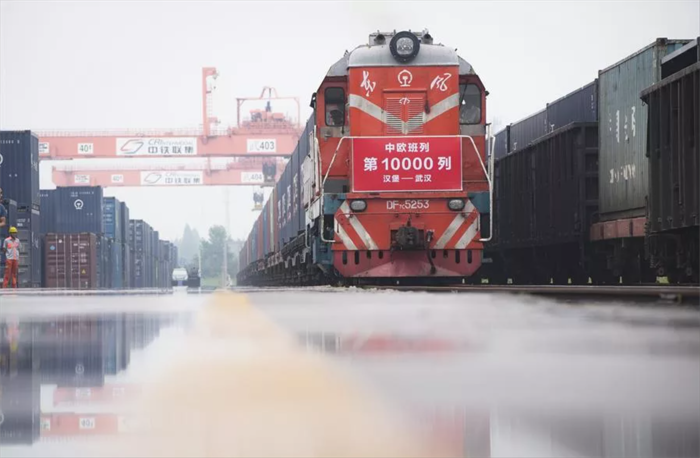Forget being the Year of the Snake, 2025 will be “the year of the first major alliance-free carrier”.
The combined capacity of the liners controlling more than 1% of the global liner fleet grew by 10.3% last year, according to Alphaliner.
As the only carrier opting to go-it-alone with no alliance in 2025, MSC unsurprisingly showed the strongest growth, in terms of teu slots in 2024.
According to today’s Alphaliner newsletter, the Geneva-based carrier added 50 newbuilds and 692,000 teu slots to its fleet last year, which represents an above-market average growth of 12.3%.
Its current fleet capacity is 6.3m teu, widening the gap from world number-two operator Maersk, with its 4.4m teu, to 1.9m teu. Alphaliner data shows the Danish carrier grew its fleet last year by 7.3%, with 23 newbuildings.
Next month, Maersk will launch the Gemini Cooperation with Hapag-Lloyd, which operates a fleet with capacity of 2.3m teu, having expanded by 367,000 teu or 18.7% in 2024.
The analyst found that, in percentage terms, Hapag-Lloyd saw the third-largest fleet expansion among the top 12 carriers last year, after PIL at 29.9% and Zim at 26%.
On the other end of the spectrum, Evergreen’s 6.9% fleet growth was lower than the market average, having added 24 new vessels with 212,500 teu.
And, despite the carriers’ relentless search for more tonnage in 2024, market demand remains strong, and the threat of overcapacity still hasn’t surfaced, reflected in low vessel idling and charter availability.
Alpahaliner noted that the charter market was short on tonnage above 3,000 teu, with vessels of 5,500 teu and above “especially limited until the summer”.
This low availability of vessels, it warned, had the potential to create further rises in charter rates.
It also noted that the commercially idle containership fleet ended the year “with a downtick” from what was already a low number. And over the past fortnight, Alphaliner again recorded “a reduction in carrier-controlled vessel idling”. In its latest survey, on 30 December, it recorded 58 ships, or 173,930 teu, as commercially idle.
It reported: “At only 0.6% of the total cellular fleet, the liner sector can still be considered ‘fully employed’, and there is zero structural idling.”
And the analyst warned that the upcoming alliance reshuffle was expected to further exacerbate demand for tonnage in the short-term because carriers would “require some extra tonnage as a ‘buffer’ until vessels gradually settle into their new network setups”.
However, it concluded that how 2025 would ultimately unfold for capacity demand would “very much depend on geopolitics, with the key question being to know when the Red Sea crisis will end”.
It explained: “An early reopening of the Suez route could derail the current bonanza for shipowners and carriers, with a likely return of overcapacity hitting particularly the largest ships.
“The threat is all the more plausible as another 2m teu of newbuilding capacity is expected to be delivered in 2025,” it added.
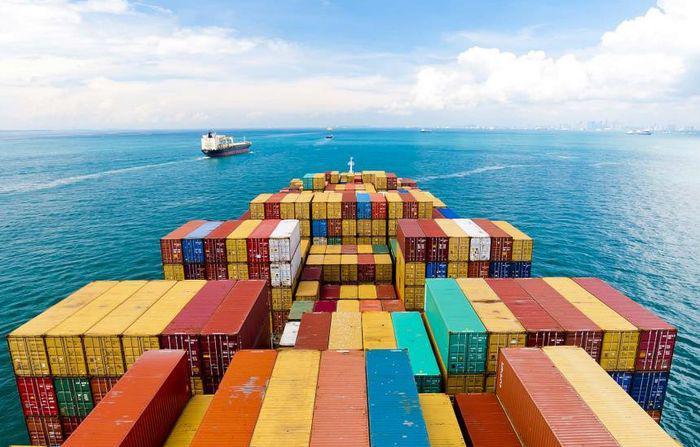
The impending network changes made by the big container lines look set to ensure continuation of services around the Cape of Good Hope until the latter half of 2025.
CEO and partner at Vespucci Maritime Lars Jensen told resumption of services through the Suez Canal would involve further network changes, and he questioned whether carriers would be willing to make these before August, “at least”.
“Shipping lines are set to phase-in their new networks over the course of February and March, and this means reliability during this period will be all over the place,” he said.
“However, the moment they decide to go through the Red Sea again, they will have to change their networks, I do not see a scenario in which they are going to be happy, having done this in February, to be required to do it again in April or May.”
Mr Jensen speculated that even if the Red Sea Crisis was resolved, the diversion of ships around the Cape would likely remain in place for a further six months.
Pointing to Maersk’s early response to attacks on commercial shipping by the Iran-backed Yemen-based Houthi militia, he also said the carriers “had learned” from the “extreme disruption” brought about by the Danish carrier’s u-turns on using the Red Sea.
“If you call it too early, you have to revert and this becomes extremely disruptive, so for carriers, there is little impetus to go through Suez just yet,” he added.
Furthermore, Mr Jensen said, shippers were equally hesitant about “jumping the gun”, favouring the stability of the longer transits to potential disruption, noting that the response to CMA CGM’s planned new Suez service typified shippers’ mindsets.
“CMA CGM has been offering an Asia-Mediterranean service operating through the canal, escorted by naval vessels, and announced a new service running to the US,” he said. “But customers baulked, telling the carrier they did not want their goods going through the Red Sea.
“For shippers, the concern is not that the Africa route takes longer, nor that they may lose their cargo if a ship is attacked, the concern is general average (GA).”
Mr Jensen explained that if a ship was attacked by Houthis, it could catch fire and leak fuel into the sea, leading to “an expensive clean-up” and a likely declaration of GA.
While shipper insurance would potentially cover this under normal circumstances, given the known threat in the Red Sea, Mr Jensen said, “insurance would not cover GA in a risky area”, even regardless of naval protection on offer, in the case of CMA CGM.
But Mr Jensen added: “When it becomes clear that there is no more risk, competitive pressures will prompt one carrier to start using Suez again, and then they will all follow suit, because it will be quicker and cheaper for shippers.”

Container spot freight rates on the key transpacific eastbound trade have started 2025 with strong gains, following the partial implementation of 1 January general rate increases (GRIs) and ongoing healthy demand.
Drewry’s World Container Index (WCI) showed a 7% week-on-week gain on its Shanghai-Los Angeles leg, to finish the week at $4,829 per 40ft, a level that is 77% above the same point of 2024.
Meanwhile, the WCI’s Shanghai-New York leg grew 6% week on week, to $6,445 per 40ft, 67% up on the same point last year, reflecting a month of strong pricing ex-Asia to both the west and east coasts of the US.
“Transpacific spot rates have seen sharp increases of 38% to the US west coast and 23% to the east coast in the past four weeks,” Alphaliner noted in this week’s commentary.
“These rate gains could also be related to the impending labour strikes on the US east and Gulf coasts and to the fear of increased US import dues under the new Trump administration,” it added.
There is also the strong possibility that next week will see further gains, as a series of carrier GRIs – ranging from $3,000 to $1,000 per 40ft, depending on the shipping line – only came into force on 1 January and are likely to further influence rates over the forthcoming week.
And globally, carriers have begun the year in a considerably stronger pricing position. Today’s composite rate at the WCI was some 46% higher than the first week of 2024, while the Shanghai Containerised Freight Index (SCFI) for the last week of 2024 was some 40% above the last week in 2023.
Much of the most recent growth, over the past few weeks, has been generated on the trades into the US, while spot rates on the Asia-Europe trades have largely remained static.
Today’s reading of the WCI’s Shanghai-Rotterdam leg saw spot rates decline 1% week on week, to end at $4,774 per 40ft, while the Shanghai-Genoa leg was unchanged at $5,420 per 40ft. Spot rates on the trades are 33% and 30% up year on year, respectively.
The WCI’s headhaul transatlantic Rotterdam-New York leg was also unchanged week on week, at $2,720 per 40ft, but it is 81% up year on year.
However, the potential return of industrial action at ports on the US east and Gulf coasts, as well as the timing of this year’s Chinese New Year (26 January) could see overall costs for US transatlantic importers escalate rapidly this month.
CMA CGM has announced a $2,000 per 40ft peak season surcharge (PSS) on shipments into the east and Gulf coasts from Mediterranean loading ports for 18 January. The French carrier will also implement a $1,500 per 40ft PSS on shipments from the Middle East/Indian subcontinent on 15 January.
Then, 18 January will see MSC introduce a $2,000 per 40ft emergency operations surcharge on transatlantic shipments into the US east coast, which it said was due to “foreseen operational disruption” during the first months of this year, as it reorganises its network on the trade once its split from 2M partner Maersk is under way.

French ocean carrier CMA CGM has announced the implementation of a Peak Season Surcharge (PSS) effective from 25 December 2024, until further notice.
This surcharge applies to cargo originating from North China and destined for the West Africa North Range, which includes Liberia, Senegal, Mauritania, Gambia, Guinea, Sierra Leone, Guinea Bissau, Cape Verde, and Sao Tome and Principe.
The surcharge for this route has been set at US$400 per TEU for dry cargo.
Additionally, a separate Peak Season Surcharge has been introduced for cargo originating from Central and South China and destined for the same West Africa North Range region.
For this route, the surcharge is US$200 per TEU for dry cargo.
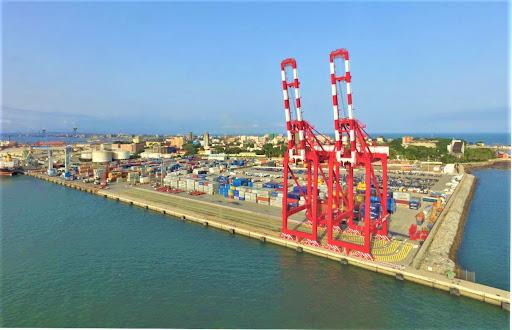
Port of Oakland’s total cargo volume shot up 10% year-to-date, January through November 2024, compared to the same period in 2023.
“We are optimistic that strong container volume will continue through the end of the year,” pointed out Port of Oakland Manager of Business Development and International Marketing Carolyn Almquist. “We expect to be on track to return to our pre-pandemic baseline cargo numbers. Our total inbound and outbound volume is up, and agricultural exports are boosting our outbound cargo business.”
Full imports increased by 13.1% in November, over the same month in 2023, reaching 80,580 TEUs. Additionally, full exports jumped 8.5% with 66,619 TEUs transiting the Californian port facilities in the previous month. At the same time, empty imports fell by 14.8% to 12,028 TEUs, while empty exports rose by 14.7% to 22,495 TEUs.
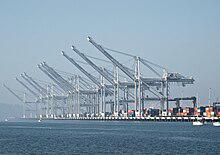
Container spot rates on the transpacific trades shot up this week, on the back of a series of mid-December general rate increases (GRIs) that appear to have significantly boosted prices.
Shippers on the transpacific eastbound route from Asia into the US west coast found themselves paying nearly an additional $1,000 per 40ft after Drewry’s World Container Index (WCIU) recorded a 26% week-on-week hike in the spot rate.
The WCI’s Shanghai-Los Angeles leg rose $913 per box, to finish the week at $4,499 per 40ft.
And shippers on the US east and Gulf coasts faced similar price increases, with the WCI’s Shanghai-New York leg rising 17% week on week, to finish at $6,074 per 40ft.
While the Shanghai-New York rate rose marginally last week, this week’s increase on the Shanghai-Los Angeles was the first upward movement for a number of weeks.
Meanwhile Xeneta’s XSI short-term index, which tracks both transpacific routes, recorded a 10% week-on-week rise, to $4,391 per 40ft.
“Drewry expects an increase in rates on the transpacific trade in the coming week, driven by front-loading ahead of the looming ILA port strike in January and anticipated tariff hikes under the incoming Trump administration,” the analyst said; and a series of January GRIs and other planned surcharges next month could see transpacific spot rates grow sharply again.
A number of transpacific carriers have filed 1 January GRIs with the FMC: Cosco, Evergreen, Hapag-Lloyd, HMM and Yang Ming all aiming for $3,000 per 40ft; CMA CGM and Zim are set to apply $2,000 per 40ft; and ONE eyeing $1,000.
Meanwhile, transatlantic shippers also saw spot rates on the rise, with the WCI’s headhaul Rotterdam-New York leg gaining 3% week on week, to finish at $2,713 per 40ft, some 83% up year on year. The transatlantic portion of the XSI saw a week-on-week rate increase of 3%, to $2,814 per 40ft.
Transatlantic spot rates could be set to rise further next month if other carriers follow the lead of MSC, which yesterday advised that it will hike an intended emergency operation surcharge (EOS) on 18 January from planned $1,000 per 40ft high cubed, to $2,500 on North Europe to US shipments.
MSC told customers: “In light of the significant changes in the transatlantic networks to restructure the services beginning of 2025, we foresee operational disruption during the first months of next year. For this reason, MSC announces the increase of the Emergency Operation Surcharge (EOS) as from 18 January until further notice.”
Of course, the scheduled implementation date is some three days after the ILA-USMX 15 January negotiations deadline, so there are still a large number of significant variables for transatlantic shippers to consider.
For Asia-Europe shippers, it was a relatively quiet week, with spot freight rates on the WCI’s Shanghai-Rotterdam slipping 1%, to $4,819 per 40ft, and reversing last week’s marginal GRI-induced increase.
The WCI’s Shanghai-Genoa leg also slipped 2%, to $5,424 per 40ft.
Traditionally, most shippers and forwarders would have by now concluded their annual rate negotiations with their carriers on the Asia-Europe trades. This year, however, both carriers and 3PLs expect the majority of shippers to now sign these deals in the first quarter of next year.
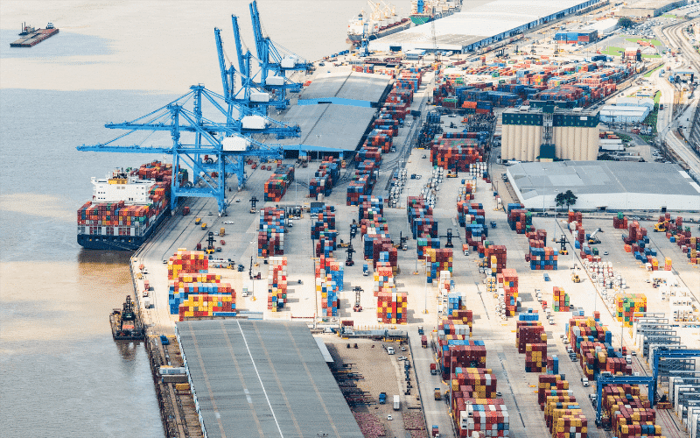
The East Java Multipurpose Terminal (EJMT), operated by International Container Terminal Services, Inc. (ICTSI) in Indonesia, celebrated a milestone by successfully handling its first container ship since beginning operations at the newly developed deep-water terminal in mid-October.
On Saturday 14 December, XinYi Glass made its inaugural call to Indonesia, selecting EJMT for its container discharge operations. The cargo is destined for XinYi Glass’s new manufacturing facility in Gresik, Indonesia.
EJMT boasts state-of-the-art equipment, including two Konecranes Gottwald ESP.8 mobile harbor cranes—the largest of their kind in East Java. For bulk cargo handling, the terminal utilizes four grabs with capacities of 30 and 12 cubic meters and two 60-cubic-meter automated anti-dust hoppers.
Its operational fleet also features two Kalmar reach stackers, an empty container handler, three automated Stinis spreaders, four Terberg tractors, and five Tantri trailers.
Strategically situated 60 kilometres northwest of Surabaya in Lamongan Regency, EJMT faces the Java Sea and lies outside the Surabaya Channel. As East Java’s newest gateway, EJMT is well-positioned to support hinterland customers across domestic and international markets.
“We would like to extend our gratitude to XinYi Glass and their management for entrusting EJMT to handle their first vessel call in Indonesia,” stated Patrick Chan, EJMT’s Chief Executive Officer.
Patrick Chan added, “Having handled our first container call, alongside multiple project vessels, we have demonstrated our capability as a fully multipurpose terminal that can accommodate all types of cargo. We are ready to support East Java.”
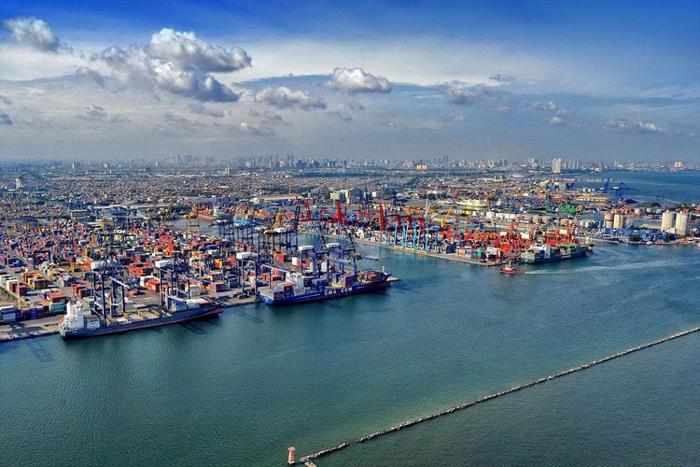
Welcome a new company on MaxModal. You can see TS-Shipping GmbH &Co.KG services on their business profile, drop them a message, add them to your contacts or submit a special request to them
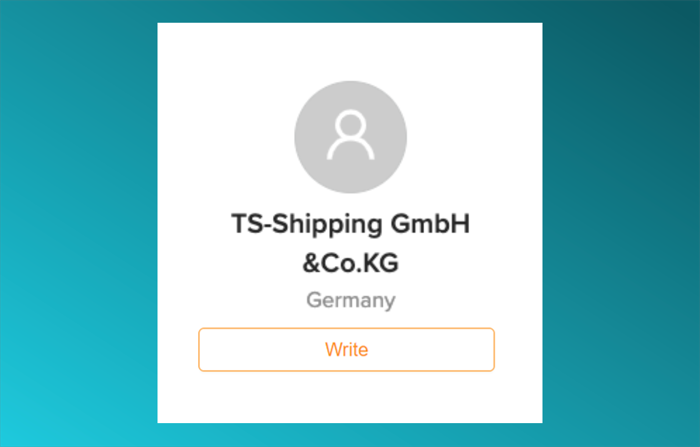
The employers’ “only choice” is “how they want to lose” the stand-off with US east coast dockers; with suggestions this may provoke a longer strike than expected.
After suspending strike action in September, the ILA dockers’ union has struggled to win any concession from employer association USMX on the issue of port automation, but the US presidential election may have handed it a trump card.
S&P Global VP Peter Tirschwell told podcast The Freight Buyers Club that president-elect Donald Trump would “side with the union, 100%”.
He added: “Trump’s announced nominee for labour secretary,Lori Chavez-DeRemer, is a pro-union person; his political base is blue collar like dockworkers, and he has already been openly expressing support for the dockworkers’ position.”
Mr Trump’s support for the ILA makes sense, given that supporting the dockers plays into his ‘America First’ position if those workers look set to lose out to foreign firms.
And Mr Tirschwell cited the timing of a potential strike – set to commence five days before Mr Trump’s inauguration.
He said: “They go on strike then. They’re on strike for five days. Trump comes into office as the knight in shining armour who tells the ocean carriers ‘there’s going to be hell to pay, unless you agree to what the union is asking’, and he saves the day.”
Vespucci Maritime CEO Lars Jensen told the podcast he was largely in agreement, but had noted “another play” that was “important to keep in mind”.
“That is the end game, as I see it. That the carriers and USMX are going to lose this battle, I think, is more or less a foregone conclusion. The only question then is how do they want to lose it?”
“At the end of the day, they are going to have to lose it in a way that makes it the easiest to pass on these costs to the customers.”
Mr Jensen added that, far from any strike being short, it would be in the best interest of the employers to ensure not only that it went on “as long as possible,” but that it was “as painful as possible”.
Taking such an approach, he continued, would make it easier for them to tell shippers that either the base rate had increased, or that a new surcharge was being introduced.
“The more visible it is that they’ve been browbeaten by a combination of the administration and the ILA, the easier it’s going to be for them to then force through rate increases to compensate them” he said.
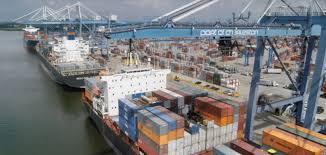
China Railway Signal & Communication has signed a memorandum of understanding (MoU) with state-owned Vietnam Railways Corp for railway development in the Southeast Asian country, the government said on Wednesday.
Vietnam has turned to China for funding and technology for its massive railway development projects, including three railway lines linking the capital Hanoi with China and a high-speed railway from Hanoi to the southern economic hub of Ho Chi Minh City.
The agreement between the two companies will pave the way for cooperation in railway planning, construction, training and operation, the government said in a statement.
Deputy Prime Minister Tran Hong Ha said on Tuesday that Vietnam wanted to speed up the construction of three new railways linking the two countries.
On 17 December, Vietnamese Deputy Prime Minister Tran Hong Ha met with Lou Qiliang, Chairman of China Railway Signal & Communication in Hanoi.
